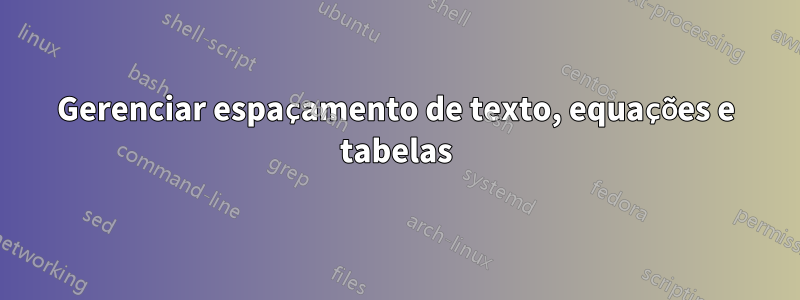
Eu uso setspacepara alterar o espaçamento nos textos.
\usepackage{setspace}
\setstretch{1.435}
O espaçamento nas equações pode ser gerenciado alterando\arraystretch
A abordagem de @egreg emaqui
\usepackage{etoolbox}
\pretocmd{\array}{\renewcommand{\arraystretch}{0.69686}}{}{} % 1/1.435=0.69686
ou a abordagem de @campa emaqui
\usepackage[nodisplayskipstretch]{setspace}
\setstretch{1.435}
\everydisplay=\expandafter{\the\everydisplay\setstretch{1.0}}
No entanto, de qualquer forma, o espaçamento entre linhas na tabela é um espaçamento de sinal e não pode ser alterado alterando o valor em \arraystretchou \setstretch.
Prefiro aumentar um pouco o espaçamento entre linhas nas tabelas do que o espaçamento entre sinais. Como eu posso fazer isso?
\documentclass{article}
\usepackage{lipsum} % just for this example
\usepackage{amsmath}
\usepackage{booktabs}
\usepackage{setspace}
\setstretch{1.435}
\usepackage{etoolbox}
\pretocmd{\array}{\renewcommand{\arraystretch}{1}}{}{} % increase a little for the row spacing in equations
\begin{document}
\lipsum*[1]
\begin{equation}
X=\begin{cases}
\frac{1}{2}, & \text{if $a=1$} \\
\frac{3}{2} & \text{otherwise}
\end{cases}
\end{equation}
\begin{table}[htbp]
\centering
\caption{Changing the row spacing in the table}
\begin{tabular}{ c c c }
\toprule
cell1 & cell2 & cell3 \\
\midrule
cell4 & cell5 & cell6 \\
cell7 & cell8 & cell9 \\
\bottomrule
\end{tabular}
\end{table}
\end{document}
Responder1
Para o espaçamento de equações multilinhas, é possível brincar com o spreadlinesambiente de mathtools. Não funciona com o casesambiente simples, mas você pode usar a variante deste ambiente introduzida por mathtools.
Para tabelas, você pode usar cellspace, que define um espaçamento vertical mínimo na parte superior e inferior das células em colunas com especificador prefixado com a letra S (ou Cse você carregar siunitx). Por último, recomendo carregar o captionpacote, que permite definir o salto entre legenda e flutuação.
Aqui está um exemplo de código exagerado:
\documentclass{article}
\usepackage{lipsum} % just for this example
\usepackage{mathtools, empheq, nccmath}
\usepackage{booktabs, caption}
\captionsetup{skip=20pt}
\usepackage[math]{cellspace}
\renewcommand{\cellspacetoplimit}{10pt}
\renewcommand{\cellspacebottomlimit}{10pt}
\usepackage{etoolbox}
\BeforeBeginEnvironment{equation}{\begin{spreadlines}{20pt}}%{\spreadlines{20pt}}%
\AfterEndEnvironment{equation}{\end{spreadlines}}
\BeforeBeginEnvironment{empheq}{\begin{spreadlines}{20pt}}%{\spreadlines{20pt}}%
\AfterEndEnvironment{empheq}{\end{spreadlines}}
\usepackage{setspace}
\setstretch{1.435}
\pretocmd{\array}{\renewcommand{\arraystretch}{1}}{}{} % increase a little for the row spacing in equations
\begin{document}
\lipsum*[1]
\begin{equation}
X=\begin{cases*}
\mfrac{1}{2}, & \text{if $a=1$} \\
\mfrac{3}{2} & \text{otherwise}
\end{cases*}
\end{equation}
\begin{empheq}[left ={ X = \empheqlbrace}]{alignat*=2}
& \mfrac{1}{2}, &\quad & \text{if $a=1$} \\
& \mfrac{3}{2} & & \text{otherwise}
\end{empheq}
\begin{table}[htbp]
\centering
\caption{Changing the row spacing in the table}
\begin{tabular}{ Sc c c }
\toprule
cell1 & cell2 & cell3 \\
\midrule
cell4 & cell5 & cell6 \\
cell7 & cell8 & cell9 \\
\bottomrule
\end{tabular}
\end{table}
\end{document}




